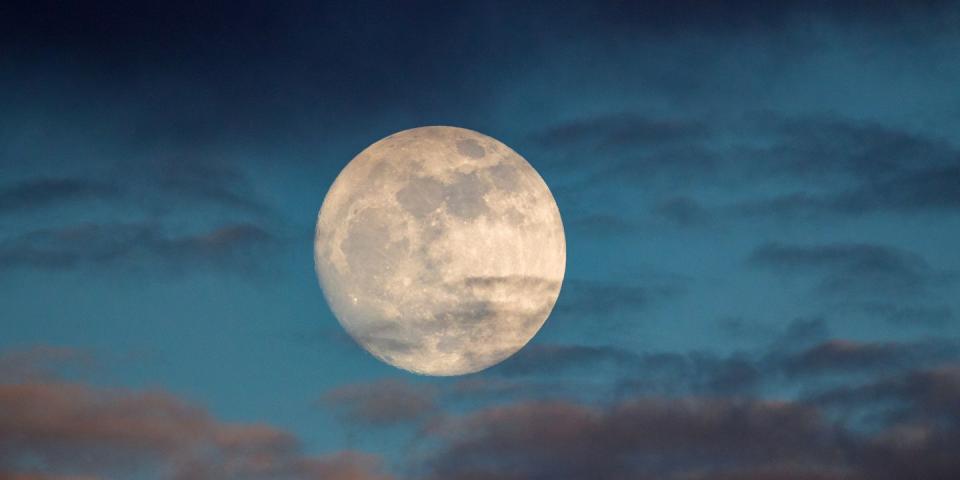Here's Everything You Should Know About The Full Buck Moon

In July, the full moon is called the Buck Moon. This year, the Full Buck Moon is expected to appear July 16—but don't get your hopes up too much: Yyou won't actually be able to see a difference in the full moon. It isn't like the Full Pink Moon, or the Super Blood Wolf Moon Eclipse. So what, exactly, makes it special? Read on to fund out.

What is a Full Buck Moon?
Okay, so the Full Buck Moon gets its name because of the time of year it appears—not because of how it looks. The term "Buck Moon" was given to the full moon of July because it's the first moon of the summer, according to NASA's moon website. The moon was given the name back in the 1930s by the Maine Farmer's Almanac. We are officially three weeks removed from the summer solstice and now we have the summer's first full moon to look forward to.
To provide a little bit of context NASA said, "Early Summer is normally when the new antlers of buck deer push out of their foreheads in coatings of velvety fur." I know you're thinking, Wow. This is all starting to make sense now...but honestly who came up with this? Well, NASA has an answer for that too: The native Algonquin tribe is believed to have first used the term "Buck Moon" in reference to this phenomenon.
When can I see a Full Buck Moon?
The moon is expected to become full on Tuesday, July 16 at 5:39 p.m. When a moon becomes "full" that means it is exactly at a 180-degree angle from the sun, making it visible for all of us to see. So get your cameras ready!
Follow House Beautiful on Instagram.
('You Might Also Like',)
